Through the Advanced Archaeological Field Techniques Course, students and interns work in a community-based project and learn the entire fieldwork process, from planning and survey, to excavation and the retrieval of artifacts, followed by processing and recording of the materials, their study and interpretation, and in the end the production of a final report. Over the course of the semester students are exposed to—and participate in—all aspects of this archaeological process.
Community-Based Archaeology
In the ANTH 362 course, the Department of Anthropology at Rice University and the Texas Historical Commission have embarked on a community-based archaeology research project to study the lives of the captive laborers including enslaved people and prisoners from the convict leasing system who worked and lived at Varner-Hogg Plantation in Brazoria County in the 19th and 20th centuries. Through community engagement and archaeological field and lab research, the project aims to examine the historical context and legacies of slavery and how it is presented in cultural heritage and public history.
Verner-Hogg Plantation, located southwest of Houston in Brazoria Country, dates its historical beginnings to 1824 when its first owner, Martin Varner, was granted homestead land by Stephen F. Austin. In 1834 Columbus R. Patton purchased the land and turned it into a plantation, where he grew cotton and sugar through the labor of an estimated 40-60 slaves. After Emancipation, many of the freed slaves stayed on the plantation and worked as tenant farmers and convict leasing augmented was used. Today, the site is managed by the Texas Historical Commission (THC) as an historic site. Our research is part of a renewed effort to examine the archaeology of the plantation in order to facilitate the interpretation of the site for visitors.
To learn more about the workings of this project, please check out this Research Spotlight.
To view the video series on Community-Based Archaeology produced by the ANTH 392 Course in the Fall 2020 Semester, please check out this Rice News story.
2023 Advanced Archaeological Field Techniques Project

The Rice University Advanced Field Techniques in Archaeology course took place in the spring of 2023. The class of Rice students included Margo Gee and Nikole Munson Tamez. They worked on a team also comprised of Dr. Molly Morgan and Maggie Katongo (Rice archaeologists), Nicholas Bourgeois and Reece Black (Texas Historical Commission archaeologists), and Justan Autry and Jess MacDonald (community interns). Key volunteers included Tracie Autry who assisted with all aspects of field work, Dr. Christina Normore who took the class as a visiting researcher at Rice, and Texas Historical Commission stewards Sandy Rogers and Sue Gross.
This project has focused on the area of the site located in what is called the picnic loop,across Varner Creek from the main house at Varner-Hogg Plantation. This is the area of the site where the quarters of the enslaved have been documented. In 2020 and 2022, under permit Texas Antiquities Permit #9237, excavations identified the rubble remains of brick foundations of Structure 3, with domestic material culture supporting the interpretation of the structure as a residential cabin. The 19th century diagnostic artifacts situate the occupation in the middle to late 19th century when slavery and captive leasing took place at Patton Place (what the plantation was called at the time) and throughout the region.
In this 2023 field season, our work falls under Texas Antiquities Permit #31001. In our fieldwork, we continued to look for in-tact remains of Structure 3 through the excavation of two 1x1m excavation units. Our research goals can be summarized as follows:
1. To contribute to the growing public archaeology and d To learn and practice archaeological field techniques - The research team conducted four full weekends of excavations at Varner-Hogg Plantation State Historic Site. Students and interns set up excavation units and then worked to become proficient at recognizing characteristics of the soil and accurately recording archaeological data. Archaeological materials were collected, cleaned, and catalogued following the guidelines of the Texas Historical Commission (THC), with the aid of consultation from Jamie Ross. We also engaged in lunch-time workshops on the identification of historical ceramics and glass from THC steward Sue Gross and past intern Grace McWeeney. THC archaeology team members Nick Bourgeois and Reece Black also showed the students how the ground penetrating radar survey had been conducted. Students completed their work with the write-up of a report.
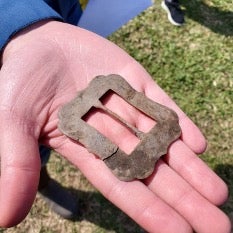
2. To conduct research on the lives of captive laborers in the early history of Texas, including enslaved people and those laboring under the convict leasing system - Toward this objective, we sought to gain information about Structure 3 through investigation of architectural remains and by recovering materials that could help understand a range of activities taking place in this location. While we did not find in-tact remains of brick house foundations, we did find a layer of disturbed brick, further documenting the presence of a structure at this location and clarifying the composition of the anomaly identified through ground penetrating radar. Some small finds are of particular interest in expanding our understanding of the types of activities that took place here. Excavators identified a copper alloy buckle, likely a shoe buckle. Items of personal adornment such as this one hint at expressions of identity, consumer market access, and fashion. Researchers also found fragments of a writing slate in this level, indicating that learning took place here. Lastly, the finding of a harmonica reed fragment allows us to to attribute recreational activities such as the use of instruments to make music, supporting interpretations of a social life in the quarters. These finds expand our image of captive labor at this site beyond that of the trauma, violence, and exploitation that was a part of these institutions, to also include activities like dressing in the fashion of the time, teaching and learning the practice of writing, and making music.
3. To contribute to the growing public archaeology and descendants programming at Varner-Hogg Plantation and Levi Jordan Plantation State Historic Site - Connections with members of the community made up an especially important component of our team’s work this year. Tourists as well as local church groups and youth organizations visited our excavations, showing interest in this history and giving us the opportunity to share our work. Our stellar interns engaged with authentic interest in expanding their knowledge of this past in their community and pledge to continue to engage in project events in the future.
This year’s work began with a reflection on the sacredness of working in the private homes of captive laborers at Patton Place. Standing at the excavation site, we recognized the clear line of sight back to the second story porch of the Patton Main House. The area across Varner Creek could have been easily surveilled by Columbus Patton or others looking out over the sugar mill and quarters area. However, we also imagined the structures that would have been standing in this space. Their walls would have obstructed views and created private spaces. We tried to imagine the difficult lives that were led in those spaces and to open up our research to find new information with which to fill those images with other aspects of plantation life.
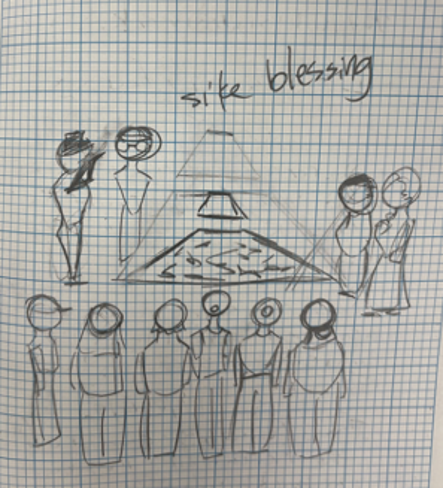 The most significant act of our season opening involved the site blessing ceremony that took place on the morning of February 5th. Pastor Del Shon Waller Sr, from St. Mary's- Bethlehem African Methodist Episcopal church graced us with his prayer and reflection. Ms. Lonita Lewis sung beautiful hymns. Finally, Vikton le Givens from Rice’s Center for Engaged Research and Collaborative Learning (CERCLE) contributed a powerful closing. It was an emotional experience for all, connecting different groups from within the local community, along with outsiders, and all of us with the people who inhabited these spaces in the past.
The most significant act of our season opening involved the site blessing ceremony that took place on the morning of February 5th. Pastor Del Shon Waller Sr, from St. Mary's- Bethlehem African Methodist Episcopal church graced us with his prayer and reflection. Ms. Lonita Lewis sung beautiful hymns. Finally, Vikton le Givens from Rice’s Center for Engaged Research and Collaborative Learning (CERCLE) contributed a powerful closing. It was an emotional experience for all, connecting different groups from within the local community, along with outsiders, and all of us with the people who inhabited these spaces in the past.
Receiving public groups at the excavations is a favorite event of excavation teams, and this year we had several historical tourists and local groups come by. Students and interns excelled at presenting a concise overview of excavation processes and findings. The eagerness of our visitors, especially the children, brought energy to our daily routine.
Finally, the largest community impact this year most definitely comes from our community interns. Jess MacDonald and Justan Autry, along with Justan’s mother Tracie Autry, reminded us why this work is important. We learned a lot from them about the local community in this part of Brazoria County, and the opinions and connections people have with the past. Through discussions with our previous intern Cheryl McBeth, we also learned about the lives of descendants who can trace their heritage back to Patton Place and neighboring plantations.
4. To use the materials and information gained through our research to enhance public history presentations at cultural heritage sites - Finding out new information about the activities that took place across Varner Creek from the main house, in the area of captive labor, provides evidence through which to tell new stories about the experiences of all of the people who lived at Varner-Hogg plantation. The buckle, writing slate fragments, and piece of harmonica reed will be used in future exhibits at the site to engage the public in these stories.
Rice Internship Program
As part of the development of a community-based archaeology program, Rice University seeks interns each year to participate in archaeological field and laboratory research along with the Advanced Archaeological Field Techniques Course (ANTH 362). Goals of the internship program are to enhance our relationship with local community members, and to build a project that combines scientific, academic, and local knowledge toward interpreting the past through archaeology. For participants to be compensated for work on the project, these internships carry a stipend for up to two participants per year, supported by the Department of Anthropology. Ideally the program involves one student intern (either high school or non-Rice undergraduate) and one non-student intern, both from a community located close to the archaeological site location.
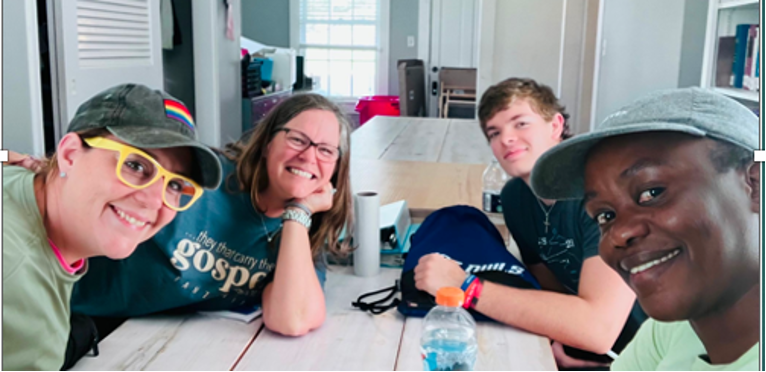
Participants engage in archaeological excavation with the research team. Interns also receive a targeted reading list and weekly discussion assignments. They work with the course instructor and teaching assistant to explore key topics in archaeological research and interpretation. Following excavations, they aid in the processing of archaeological materials for analysis.
- 2023 Interns
-

Justan Autry - I was lucky enough to be selected to be an intern for this years Rice University Archaeology project at Varner-Hogg plantation. This is my senior year of high school and I am currently studying Earth Science and American History, which made this opportunity perfect for me to have hands-on learning in those specific fields. Doing this project with Rice also allowed me to complete the requirements to graduate as a distinguished student.Overall I am very happy with my experience and couldn’t me more thankful for the opportunity to work with highly intelligent individuals from Rice University as well was members of the Texas Historical Commission.
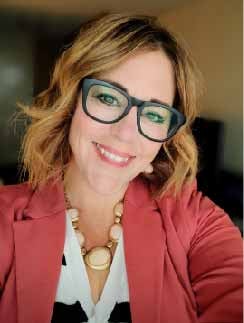
Jess MacDonald - I served as a community intern on the Spring 2023 Community Based Archaeological Technical Field Study program, hosted by Rice University at the Varner-Hogg plantation site. The experience was not only educational, but was also an opportunity to connect with a network of like minded academics and community members. I loved the two pronged approach to the program - classroom learning and field work. The classroom time allowed us to learn the technical and scientific parts of archaeology in a collaborative environment. We had manageable reading assignments and then discussed our learnings with the group, which often led to larger thought provoking discussions. We were also able to link and apply what we learned in the classroom to the work we were doing in the field, allowing us to draw connections and better understand the methodology and processes. Despite the classroom assignments being from a textbook, having the opportunity to discuss the lessons with local community members in the program, made even the technical lessons feel personal. The field work was exciting, emotional and moving. Each artifact felt like a piece of history and gave me a new respect for the enslaved people who lived on the plantation so many years ago. The pieces told a story and at times brought exciting insights we hadn't considered. Finding a piece of slate, with lined etchings indicated learning and teaching. Uncovering a harmonica reed lends to the idea of entertainment and music and celebration. And the fully intact shoe buckle was a surprise because it was uncharacteristic for someone from the enslaved community to have owned high end, sophisticated footwear. We handled each piece with care and learned to be diligent in how we uncovered, handled and processed each artifact. We learned the importance of precise and frequent measurements, detailed note taking and proper artifact identification and cataloguing in the lab. In addition to the classroom, field and lab work, we had lunch sessions with community members to learn more about the history of the area and were invited to an evening foodway event to showcase the types of diet and food the enslaved people of the time and area would have prepared. The program was well thought through, inclusive, educational and fun. The leaders from Rice and the THC encouraged family and friends to join all aspects of the project and were delighted to share in the learning. I cannot say enough wonderful things about this experience. It is so valuable for our community and to help tell the whole story of the people who were enslaved on the plantations. I will continue to encourage the community to get involved and share their own stories as well.
- 2022 Interns
-
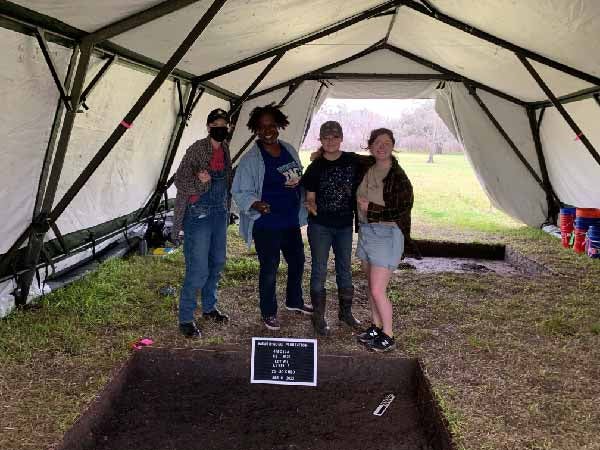
Cheryl McBeth has a background in tax accounting, massage therapy, and substitute teaching. Her ancestors were enslaved at the Levi Jordan and Mims Plantations in Brazoria County, and as free persons they established the community of McBeth near Angleton in the early 1900s. She tells us that she wanted to be part of the excavation project because it brings her closer to her ancestors. Above all, she values being part of the research as a descendant because she can testify that the families descended from the enslaved are living happy lives in these spaces now and they remember the contributions of those who lived there before them. As part of our project team, Cheryl’s knowledge of the local landscape and history have made important contributions to our discussions and interpretations.
Grace McWeeney is from Missouri City, TX and is currently working as a volunteer curatorial assistant at the Brazosport Museum of Natural Science and a volunteer on the Descendant’s Project at Varner-Hogg Plantation. She earned her BA in Anthropology from Southwestern University in 2021 and is seeking a career in Anthropology, Museum Studies, or Cultural Heritage. Grace says that she wanted to join this project in order to gain valuable insight not only into local history but to learn from the experiences and wisdom of all of the people involved along the way. In Grace’s experience growing up in Texas, she reports that local narratives, especially regarding the enslaved and convict laborers, were largely erased in the education system. Partaking in this project offered Grace the opportunity to learn more about the Brazoria County area and its people through hands-on research and application that she missed while attending school here. Grace states, “I have never been given an experience quite like this one, and I will be forever grateful for the people I met in the process. I truly valued the time I spent observing, chatting with, and learning from Rice University's students and faculty, Varner-Hogg's volunteers, the Texas Historical Commission's stewards, and the countless others who visited and assisted.” Grace’s experience working with cultural material proved useful to our team as she aided in the identification of artifact types, especially ceramic artifacts.
Past Projects
The Archaeological Field Techniques class has been actively involved in African American archaeology in Houston for several years, working on urban sites in Houston’s Fourth Ward, also known as Freedmans Town as well as on the African American history of Camp Logan, a WWI training camp that once stood in what is Memorial Park today. In 2018 the class was held at the nearby Levi Jordan plantation. New research at Varner Hogg will build on our past work and continue to expose the important history of African Americans in Texas in the 19th and 20th centuries.
- Freedman’s Town (2008-2014)
-
The inaugural project was led by Jeffrey Fleisher and took place at an urban archaeological site which was part of Freedman’s Town in Houston’s Fourth Ward. Please find the project reports here:
- Camp Logan (2015-2016)
-
Jeffrey Fleisher led excavations at the African American history of Camp Logan, a WWI training camp that once stood in what is Memorial Park today.
- Levi Jordan (2018)
-
In 2018 Jeffrey Fleisher led the course project at Levi Jordan Plantation in Brazoria County.
- Varner-Hogg Plantation (2020 and 2022)
-
Spring 2020
In the spring semester of 2020, Rice University students participated in archaeological excavations at the Varner-Hogg Plantation State Historic Site, under the project directors Dr. Molly Morgan (Rice faculty) and Dr. Catherine Jalbert (Texas Historical Commission). The project team conducted research over four weekends in February and the first weekend in March. This fieldwork fulfilled the requirements for the course ANTH 362: Archaeological Field Techniques. Three students, Kristen Hickey, Luke Howe-Kerr, and Joe Merchant took the course for the second time and served as unit supervisors. Other student researchers include Kyle Bartsch, Anshul Bhatnagar, Katherine Custer, Lizzie Devine, Virginia Gonzalez, Elaine Hwang, Victoria Miller, and Biz Rasich. Fieldwork in this project involved students in setting up units of investigation, learning about soils and stratigraphy, hands-on excavation and materials collection methods, and the recording and documentation of all facets of research. Typically, this fieldwork is followed by artifact analysis and interpretation, but in this year of COVID-19, the Rice University Archaeology Laboratory closed and students finished the course by writing summaries of fieldwork and literature reviews on particular artifact categories and their importance in historical archaeology.
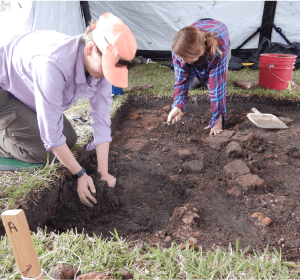
We thank the Texas Historical Commission for inviting us to participate in the ongoing work at this important site, particularly Catherine Jalbert, Chris Elliott, and Shannon Smith. Our team benefitted from three on-site guest lectures by Jeff Fleisher (Rice), Sam Collins (THC), and Arlo McKee (THC) and Brent Dell (UT Dallas). Everyone on site learned from the stories and experience shared by Sue Gross and Sandy Rogers.
We were honored to be invited to participate in A Day of Remembrance on February 22nd, when the names of nearly 200 formerly enslaved men, women and children were read aloud, including some names read by our own team members. This experience was one of the most meaningful parts of our field season, and we thank Mark Osborne, Cheryl McBeth, and all involved for allowing us to be part of the ceremony.
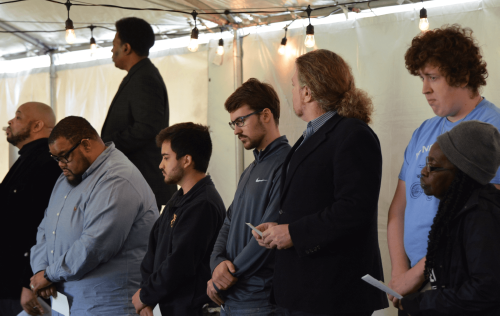
This class provides a unique opportunity for students to participate in the important experience of being part of an archaeological research project from start to finish. This involves posing research questions, planning fieldwork, and carrying out investigation. In this project at Varner-Hogg, students also had the opportunity to work toward the goal of augmenting the available information on the 19th century history of Texas, with particular attention to the lives of enslaved individuals living on plantations. This research adds to an ongoing focus of Rice’s Field Techniques class on the archaeology of African American history, following previous research directed by Jeffrey Fleisher at Camp Logan a World War I training camp, in Houston’s Fourth ward the location of Freedman’s Town, and in 2018 at the nearby Levi Jordan Plantation. This project was the first year of an ongoing research endeavor through a partnership between Rice and the Texas Historical Commission.
Spring 2022
The Rice University excavations at Varner-Hogg Plantation, a key component of the ANTH 362 Field Techniques class, took place over three weekends in the spring of 2022 – February 19-20, February 26-27, and March 5-6. Laboratory analysis and public history studies continued at the Rice University Archaeological Learning Laboratory through May. The class of 12 Rice students worked on a team also comprised of Dr. Molly Morgan (Rice archaeologist), Dr. Catherine Jalbert and Reece Black (Texas Historical Commission archaeologists), and Grace McWeeney and Cheryl McBeth (community interns). Following a previous season of work in 2020, our research focus continues to be on the 19th century experiences of captive laborers through the excavation of contexts thought to have been residences of enslaved people, or perhaps in later contexts to the laborers brought to work at the site through the convict leasing system. Other important aspects of our project include community-based archaeology, museums studies, and public dissemination of research results in cultural heritage contexts.
The research in 2022 follows an interrupted season in 2020 and a brief hiatus in excavations due to COVID. In 2020, the first iteration of the ANTH 362 at Varner-Hogg Plantation project conducted initial excavations in the area known as Structure 3, under Texas Antiquities Permit #9237 (Morgan 2020). However, that research was cut short due to the initial outbreak of the pandemic. Students were unable to complete the laboratory portion of their artifact analyses, and final conclusions were never reached to the extent we had hoped. Our new group from Rice was able to return to fieldwork for another offering of ANTH 362 in the spring of 2022 under the same Permit #9237. This year, researchers aimed to confirm the location and remnants of Structure 3, and investigate the potential for intact residential contexts.
The Rice University Archaeology Project at Varner-Hogg Plantation welcomes site visits and participation from professionals, friends, family, and the general public. In 2022 we had some visitors who left special impacts on our work and team. Groups from Jack and Jill of America visited our excavations on February 27th. This foundation promotes youth education in cultural awareness, civic leadership, and service. We were thrilled to see them visiting Varner-Hogg Plantation and felt honored for them to visit our project. The Rice students had a chance to practice speaking about their work, and the visiting children challenged them with lots of questions.
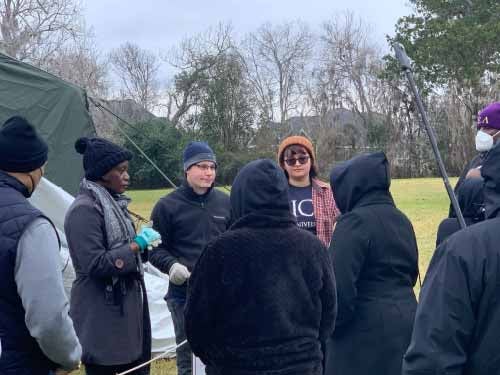
Texas Historical Commission Archaeological Collections Manager, Jamie Ross, visited the site on February 26thand 27th. Ms. Ross’s expertise in material culture and curation contributed to our artifact processing routine and team discussions. Ms. Ross also delivered a guest lecture and workshop as part of our laboratory training on March 24th. In the workshop students learned about processes of curation and materials conservation.Reverend Lynn Phipps from Burrell’s Chapel in Bailey’s Prairie made a special visit to our team on the morning of March 6th. He offered a blessing to the project, reflecting on the impact of history and ancestors, and especially on the significance of the sacred spaces in which we worked. Finally, our project continues to benefit from visit and volunteer work by Sandy Rodgers and Sue Gross. These Texas Historical Commission Stewards have loads of knowledge about Texas archaeology and material culture. They are great story-tellers and everyone loved having them on the team.
Created by student Phoenix Orta, check out this 3D model of one of our excavation units:
